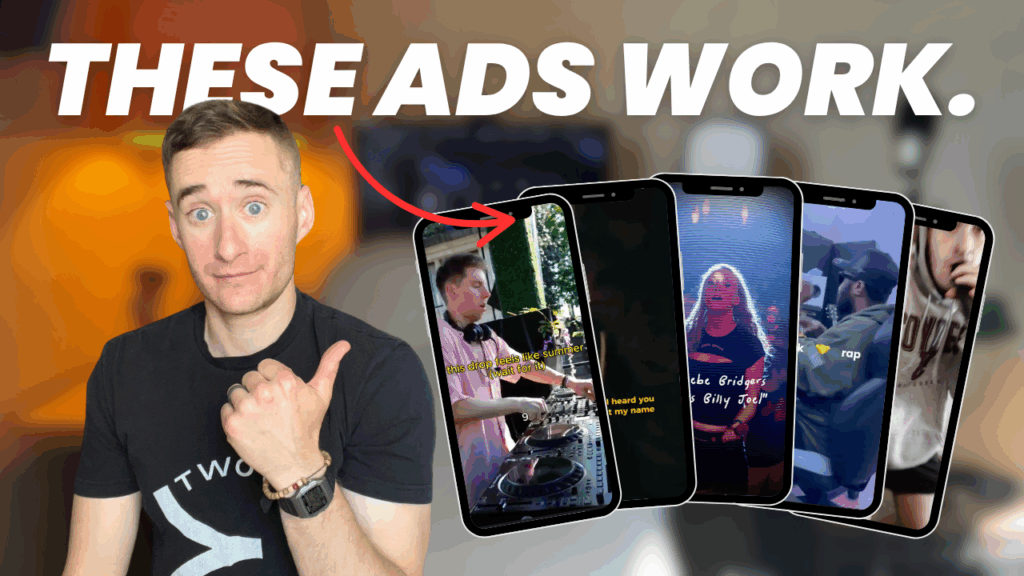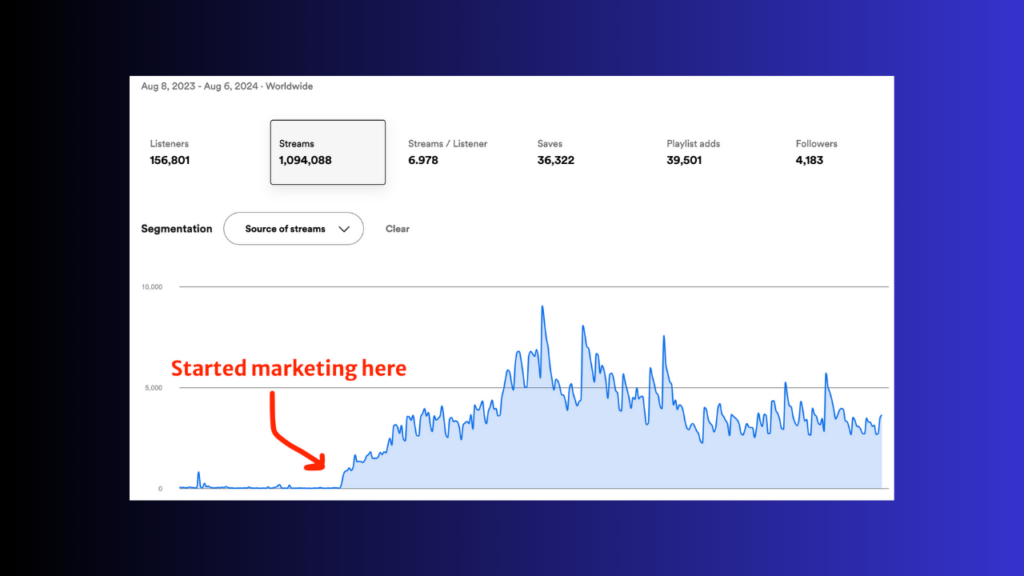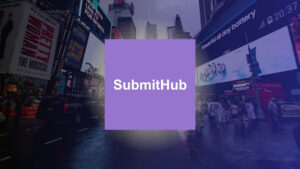Spotify is the devil.
This is, more or less, the premise of Liz Pelly’s recent book Mood Machine.
The book made a few waves in advance of its January publication, thanks to a pre-released excerpt in Harper’s Magazine that disclosed Spotify’s “Perfect Fit Content” program: a scheme to seed Spotify playlists with “fake” artists and cheap content that, because of reduced royalty rate agreements, financially benefits the company.
It was even rumored last fall that Daniel Ek was selling off his Spotify stock to get ahead of the book’s release – ostensibly, The Guardian suggested, because “the revelations contained within it would adversely affect share price.”
I finished Mood Machine last week, and I can tell you that Daniel Ek is probably safe. The book is not groundbreaking.
It is, though, a well-researched, many-sided teardown of the Swedish streaming platform. Over 236 pages, Pelly laments the company’s impact on music culture, lambasts their treatment of artists, and quotes an impressive array of more than 100 sources to meticulously piece together the argument that Spotify totally sucks.
If you like being well-informed and angry, it’s worth a read.
Otherwise, you can settle for my email today, in which I’ll give you a quick recap of the book’s main points and tack on a few of my own opinions.
If you’re up for that, then keep reading.
The SparkNotes version of Mood Machine
The beginning of a streaming behemoth
Pelly starts with three chapters on Spotify’s early days. Since 2006, the company has often positioned itself as a solution to music piracy – the fairer version of Napster, essentially, founded from an altruistic desire to support musicians.
The truth, Pelly suggests, is less admirable: Daniel Ek started the company to sell ads. He made a tech platform as the means of driving traffic, but he didn’t have a preference as to the content he’d serve on it. In fact, Pelly says, Ek originally planned to serve movies, and only pivoted to music because video files were too large to stream.
This waffling is typical of Pelly’s portrayal of Spotify in its infancy; she makes the company seem a strange combination of politically savvy and surprisingly clueless, part Frank Underwood from House of Cards, part Frank Reynolds from It’s Always Sunny.
To indies, they positioned themselves as rebellious underdogs, punks out to break the system. To major labels, they positioned themselves as a smart defense against piracy (and a wise investment).
The flexibility was partly by design, but it also seems to have been a byproduct of the company’s own incoherent self concept. To hear Pelly tell it, Spotify never had much of a plan, growing only because they were able to bumble back and forth between different public personas, attracting massive investment capital along the way.
The rise of lean-back listening
Eventually, though, Spotify bumbled into what would become their bread and butter: Curation.
It’s funny to picture now, but initially, Daniel Ek had been vehemently against the idea of an “overly curated service,” championing instead the power of the search bar to let users pick their own music.
This didn’t last, obviously. Ek gradually became convinced that, in order to grow, his company needed to capture more of users’ time – and that the best way to capture their time was to push people toward more passive listening.
So, in 2012, Spotify moved its focus to playlists.
Two chilling quotes sum up this shift well. In Pelly’s words: “If the streaming economy has contributed to any major cultural shift in recent history, it might be that it has helped champion this dynamic of passivity.
In Ek’s words, reportedly delivered to employees at an internal meeting:
“Apple Music, Amazon, these aren’t our competitors. Our only competitor is silence.”
The rest of the book
For the sake of brevity, I’m going to breeze through a bullet-point recap of the book’s remaining chapters. Pelly argues that:
- The push toward passive listening has flattened music cultures, leading to the proliferation of songs that all sound the same (i.e., most modern popular songs could be played in a grocery store or an over-priced coffee shop).
- The Perfect Fit Content program has resulted in real artists being removed from major playlists so that Spotify can benefit from cheaper, mass-produced music (that’s often distributed under fake artist profiles).
- Discovery Mode – where artists forfeit 30% of their royalties in exchange for inclusion on more Radio playlists – is basically payola.
- Spotify is benefitting from selling user data.
- Spotify is basically the devil.
Again, if you’d like to be well-informed and angry, go ahead and read the book yourself. You’ll find what you’re looking for.
My two cents
This book was thought-provoking – and I didn’t enjoy it at all.
As a whole, it gave me the same feeling you get when you inadvertently enter into a conversation with somebody holding a Greenpeace clipboard on the corner of the street: Yes, you’re right, the world is in dire shape. But I would rather not talk about it for forty-five minutes.
I think part of the tedium I felt is due to the structure of the book. It’s more a collection of essays than a step-by-step argument; it’s a cloud of well-researched fussing, but there’s not much flow.
(On that note, my friend asked me if she should read it. I told her she’d be better served reading the Harper’s Magazine excerpt and extrapolating that across another 215 pages.)
The other part probably comes from some fundamental differences I have with Liz Pelly. She’s clearly against capitalism, and she repeatedly suggests that art and culture can’t coexist with profit-driven platforms.
I by no means worship at the altar of capitalism, but I do run a business promoting music on Spotify. So while I’m sympathetic to Pelly’s line of thinking, my own (biased) opinion is that she’s probably walked it a little too far.
(Fwiw, I’m think capitalism is brutally – and probably fatally – flawed. But I also recognize that I’m typing this on a computer that’s a product of capitalism using an internet infrastructure built by big tech to reach an audience of people to whom I’d like to sell services. In other words, it’s very easy to be a hypocrite, and all of this is probably a topic for another day.)
More than that, though, I think Pelly approached her impressive research from a predetermined perspective: She seems to have gone into every interview determined to uncover that Spotify is evil. And again…
You find what you look for.
I’m not saying that Spotify isn’t evil; they’ve certainly acted evilly enough, at many times and in many ways. The PFC program is a scam. Their approach to bots is a joke. Their systematic schemes to incentivize passive listening are, quite literally, chilling.
But I also know artists who’ve been able to go full-time from Spotify streaming royalties. I know there are folks at Spotify who legitimately care about music and musicians.
I’ve personally connected with people from around the world who, apart from Spotify, wouldn’t have heard my music.
You can find the bad stuff you’re looking for, but there are also other lenses through which you can look.
To Pelly’s credit, I loved her concluding chapter.
She paints alternative approaches to music distribution and engagement with a view toward what’s possible. Could co-ops work? Could legislation for better royalties help? Could public libraries?
The answer isn’t simple; there is not, Pelly admits, a one-size-fits-all solution. (In fact, she posits, the assumption that there should be is part of the problem with Spotify.)
But the questions are worth asking – because, as ever, the music is worth making.
– Jon









